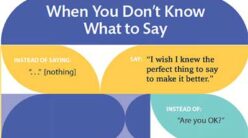Have you ever struggled to express or understand your emotions? If so, you are not alone. There are numerous factors that can make it difficult to express emotions. For many, family culture or societal expectations have conditioned us to suppress strong emotions. Meanwhile, others have never learned the language necessary to accurately describe emotions.
Sometimes our emotions just seem like a blur, leaving us unsure of what we feel and confused why we reacted the way we did. Learning to identify emotions, whether positive or negative, is the first step in being able to explore and resolve the emotions we experience.
What Happens in Your Brain When You Are Emotional
Emotional responses to stimuli are a basic brain function. When we experience something, our senses take in information to our brain, where it is rapidly interpreted. There are multiple brain systems associated with the physiological processing of emotions. The limbic system is the region of the brain strongly associated with emotions and memory. Various processes within the limbic system control the body’s physiological, physical, and emotional responses.
The brain categorizes emotions as pleasant or unpleasant, and, depending on how emotions are grouped, the body then releases neurotransmitters, such as serotonin, dopamine, GABA, and norepinephrine, causing changes in physical and mental responses. In addition to the limbic system, the autonomic nervous system, sympathetic and parasympathetic nervous systems, and reticular activating system are all involved in bodily responses to emotional cues, such as regulating breathing, controlling endocrine glands, conserving energy, and maintaining wakefulness.
In short, our brain experiences emotions based on both internal and external stimuli. The way those experiences are interpreted, based on your thoughts and beliefs, will determine which emotion is felt.
8 Steps to Identifying Your Emotions
Even though your emotions result from your thoughts and beliefs, it is still helpful to be able to identify and describe your emotions. So, what steps can you take to do this? Here are some ideas:
1. Use a list
If you’re having a hard time naming your emotion, remember that emotions are usually identified with a single word, such as angry, anxious, or ashamed. If you need more than one word to describe something, you’re probably expressing a thought, not an emotion. Thoughts are anything happening in your brain that can be put into words, such as ideas, memories, and beliefs.
Given the amount of words used to describe feelings, it’s often helpful to look at a list of emotions (such as the one on page 31) to identify what you’re feeling.
2. Differentiate beliefs from emotions
Let’s say you’re at a social gathering speaking with an opinionated former coworker. As you speak with him, the thought crosses your mind, “I feel like he is rude and is insulting me.” The “I feel like,” in reality, is representing your belief/thought that he is being rude and insulting. This belief could make you feel irritation. It’s important to separate beliefs from emotions. Emotions are a consequence of your beliefs.
3. Notice your physiological responses
Consider changes in how your body feels. Each set of emotions will have a physiological response unique to you. That tension in your neck could be an indicator that you’re stressed. That faster heartbeat might be a sign of nervousness. Those flushed cheeks may signal embarrassment. That knot in your stomach could indicate dread.
4. Practice self-awareness
Ask yourself what your likes, dislikes, strengths, and weaknesses are. Know your preferences and desires, and be honest about them with yourself and others. When you behave in a way that is congruent to your principles and values, your emotions can adjust accordingly.
5. Work backward
If you experience a highly emotional situation, work backward to identify your actions, thoughts, and feelings. Start by looking at your actions, (what you did). Then, try to remember what you were thinking that led you to that behavior. Finally, ask the question, “How does thinking like that make me feel?”
Here is an example:
Your action: You verbally lashed out.
Your thought: “He is such a terrible person! He has no right to get away with that!”
Your feeling: A combination of disgust and anger
6. Seek feedback
Talking to a trusted friend about what’s upsetting you can not only help you clarify your thoughts and emotions, but also give you a different perspective on how you’re doing. When you’re flooded with emotions and find it hard to think objectively, people who know you and are witnessing your reactions might be able to see what’s coming before you do. For example, if someone points out that you seemed quiet and distant that morning, this feedback is a sign that you should start paying more attention to how you feel and catch that emotion before it escalates.
7. Recognize patterns
Do you have a tendency to respond the same way every time you are faced with a certain situation? Perhaps you get frustrated every time you come home and find the door locked, even though you know your family is home. This irritation may cause you to pound on the door or make snarky comments. Hold on! This happens routinely? If so, you can likely begin to recognize, pinpoint, and label emotions associated with your habitual cycles.
8. Connect with God
In Psalm 139:23, the shepherd-turned-king, David, wrote, “Search me, God, and know my heart; test me and know my anxious thoughts.” If you are open to developing your spirituality, you can use the same strategy. King David didn’t rely on himself to understand his faulty brain mechanisms, but he asked God, the One who knew him better than he knew himself, to show him what was going on in his mind and heart. He prayed and meditated upon God’s Word, and, consequently, became more conscious of who he truly was.
Silaine Marques, MA, is a clinical professional counselor who has helped clients from around the world with a wide range of chronic mental health disorders. Cami Martin, MPH, is the Health Education Director for Nedley Health Solutions. She is an international trainer for the health education programs Optimize Your Brain™ and Nedley Depression & Anxiety Recovery Program™.






